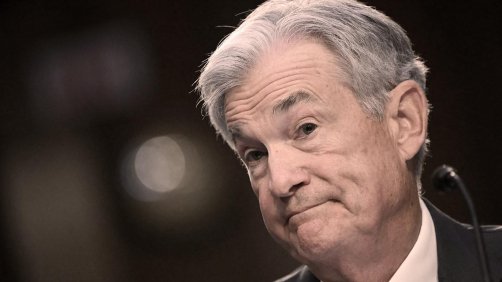In 2024, brace yourself for two surprises. First, we think that the Fed will catch markets off guard by swiftly reducing interest rates in the first quarter, possibly by 50 basis points by March.
Second, the Fed will deliver less relief than markets expect over the entire year. Consequently, we’ll likely grapple with the impact of pricing out the majority of the six anticipated rate cuts.
Why it matters: Don’t ignore the former and focus on the latter. Sequencing matters.
The rate cuts are bullish for risk assets in the near term. We expect a continuation of recent trends—stocks higher, bond yields and dollar lower.
Flashback: Between February 1994 and February 1995, the Fed doubled its benchmark short-term interest rate from 3 percent to 6 percent to slow the economy and forestall the risk of inflation. Former Fed Vice Chairman Alan Blinder admitted that “we got a little hyper-excited.”
The average number of private-sector jobs added each month dropped from over 300,000 at the end of 1994 to barely 100,000 by the middle of 1995. So in July 1995, just five months later, the Fed reduced interest rates by 25 basis points.
Inflationary pressures had receded enough, the Greenspan Fed stated, to accommodate a “modest adjustment” in monetary conditions. The Fed cut rates by another 25 basis points in December 1995 and January 1996, holding rates steady there until March 1997, when they were increased.
The economist Ed Hyman said that the three-cut series was the “magic sauce in the 1990s to get growth to stop slowing.”
What’s happening: The labor market is cooling even as the overall unemployment rate remains low. We are seeing continuing rising jobless claims, a declining workweek, and falling temporary employment.
Over the last six months, the US economy has added just over 200,000 new jobs a month. However, when excluding health care, education, and leisure and hospitality, the private sector has experienced a decrease of 7,000 in payroll employment since June.
Job growth has nearly come to a standstill across the majority of the sectors of the economy.
Get smart: The 2-year Treasury yield tends to move before the fed funds rate. In 1995, the 2-year yield dropped 50 basis points below the main policy rate before the first rate cut.
After peaking at 5.25 percent on October 19, the 2-year yield has fallen 80 basis points already. The Fed cannot afford to overlook the substantial difference with the current effective fed funds rate, which stands at 5.33 percent.
If the 2-year yield falls to first support at 4.1 percent as growth and employment slow, the Fed will need to respond more promptly or implement more substantial rate reductions.
Overheard: Fed chair Jerome Powell said that he was “very much focused” on the risk of keeping rates too high for too long. He stated that the Fed would need to start cutting interest rates “way before” inflation reached its 2 percent target because failing to do so could slow activity too much.
Our take: The Fed’s institutional memory of fighting inflation may loom large in determining the appropriate monetary policy stance and obviate the desire for deep rate cuts. We expect no more than 75 basis points of insurance cuts, enough to give the economy a boost again.
How: Just as higher bond yields spared the necessity for additional monetary tightening, the transmission of lower bond yields to borrowing rates will prove stimulative and prevent the need for more profound rate cuts. The 10-year yield at 3.91 percent is 130 basis points lower than the fed funds rate.
Having observed a notable rise in mortgage rates, even a slight decrease would attract potential homebuyers and breathe new life into the housing market. Mortgage rates peaked on October 19 at 8.03 percent and are now down to 6.95 percent.
How else: We consistently underestimate the resilience of the US consumer.
The Fed’s Survey of Consumer Finances revealed that the median US household had a net worth of nearly $193,000 in 2022, up from an inflation-adjusted $141,100 in 2019. Measures of “financial fragility” were down. The median debt payments as a share of income fell to 13.4 percent, the lowest seen in the 33-year history of the survey.
Although the excess savings resulting from the pandemic undeniably bolstered the US economy, we must now turn our attention to the more enduring impact of the wealth effect.
What this means: Stocks and bonds will suffer once it becomes clear that the Fed will provide significantly less accommodation than what the markets anticipate.
Deciding when to adopt a more defensive stance will pose the main challenge in 2024. This is not the right moment. Once again, sequencing matters.







